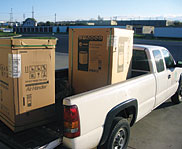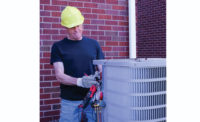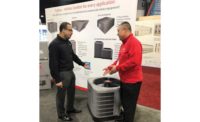
ARI credited 2005's exceptional success to a strong economy, growing housing starts, and hurricane rebuilding. "The fact that we set a record for shipments of central air conditioners and air source heat pumps for the fourth straight year I think speaks volumes about the quality of our products and the strength of our industry," said ARI chairman, Deborah Hawkins. "We are very pleased with our 2005 performance, and we look forward to another strong year in 2006."
As the celebration ensues, however, concerns are quietly mounting as many look ahead to 2006.
"Last year we saw the ‘perfect storm.' A good economy, unprecedented summer heat, and the final build-outs of 10 and 12 SEER systems propelled the unitary air conditioning market to record levels," said Karl Zellmer, vice president of air conditioning sales for Emerson's Copeland Corp.
"While current order activity remains strong as a result of OEMs ramping up new 13 SEER designs and stocking the industry channels with new equipment, Emerson Climate Technologies is projecting that underlying demand in 2006 will not support a repeat of 2005."
Zellmer is not alone in this thinking. "A build-up of 10, 11, and 12 SEER occurred with most distributors at the end of the third quarter and all of the fourth quarter. There was also a build-up of inventory by larger dealers involved in new construction. These two elements will impact first-quarter numbers as inventories are inflated," said Ivan Quinchia, vice president and general manager of Air Purchases Inc.
"The question is, how many of these 8.6 million units are still in the pipeline and what affect will this have on an industry challenged by a slow-down in sales of existing homes, slow-down in housing starts, higher interest rates, and increasing foreclosures? This will make for a very interesting first quarter in 2006, if not a very interesting half."

"Energy and energy savings have been a focus and will continue to be throughout 2006," said Renee Chesler, general manager, HVAC Insulation, CertainTeed Corp.
"Homeowners, building owners, and commercial building management companies realize that first cost or installed system costs are only the beginning, and investments are being made to reduce overall energy consumption and cost over the life of the structure. As this practice continues, the HVAC business will continue to grow."
"While early estimates are that 2006 will be a good year, shipments will probably be more in line with a normal year, which will be down significantly from the high mark of 2005," said Zellmer.
Publication date: 02/20/2006



